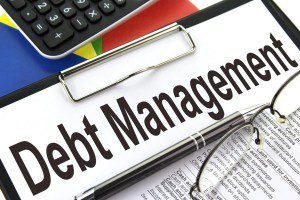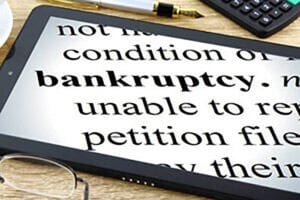Should I choose consumer proposal or bankruptcy?
If you’re dealing with a lot of debt and you can’t seem to get ahead, there are solutions. You may have heard terms like bankruptcy and consumer proposal as possible strategies to get out of debt. However, you should be aware of the implications of one over the other. Let’s take a closer look at whether you should choose bankruptcy or consumer proposal.
Featured Video:
Bankruptcy vs Consumer Proposal – What’s Best for Me?
In this webinar, Jeff Schwartz, our Executive Director and Ben Allen, Community Outreach Manager are joined by licensed insolvency trustee Graeme Whitehead to discuss which option, a consumer proposal or bankruptcy, may be best for you.
What is Bankruptcy?
Personal bankruptcy is a legal proceeding when you’re insolvent and unable to pay back your debts. You surrender your non-exempt assets in exchange for a discharge of debts. In Canada, you must file for bankruptcy with a bankruptcy trustee, otherwise known as a licensed insolvency trustee. Bankruptcy trustees act as the referee between the debtor, you, and your creditors to ensure everyone adheres to the laws.
The trustee you work with needs to have a license from the Office of the Superintendent of Bankruptcy (OSB). The OSB is responsible for making sure you comply with the Bankruptcy and Insolvency Act.
Choosing Bankruptcy
“Bankruptcy is sometimes seen as an opportunity to start over with a clean slate. But it isn’t as simple as that,” says Jeff Schwartz, executive director of Consolidated Credit Canada. “It’s a drastic financial move that will impact your finances for years into the future. Because of this, bankruptcy really should only be an option of last resort.”
To declare bankruptcy, you surrender all your assets to a Licensed Insolvency Trustee (LIT) in exchange for getting rid of your debt. A LIT is a professional who adheres to the Canadian Government’s finance laws. This person provides services for people with debt issues. They can help to make you assets liquid to pay off as much of your debt as possible. In some cases, you can keep some of your assets. However, they usually aren’t allowed to take Locked in Pensions or Registered Retirement Savings Plans (RRSPs) to assist with the cost of living, but that is on a case-by-case basis and can vary from province to province.
It’s important to know that not all debts can be included in a bankruptcy. These debts are secured debts, car loans, mortgages, or student debts (with some conditions). Also, things like alimony and child support cannot be included in the sum.
It takes anywhere from nine to 21 months for your first bankruptcy to complete and discharge your debts. But don’t forget the costs. You must pay fees to the Licensed Insolvency Trustee. In addition, you must also pay creditors a portion of your surplus income. This depends on how much money you make and the size of your family.
Bankruptcy damages your credit deeply and can prevent you from qualifying for future credit for a long time. For a first bankruptcy, it will remain on your credit report for six years from your date of discharge; for a second bankruptcy, you can expect that record to be there for up to 14 years. As bankruptcy is a legal record, it can even impact your employment.
What is a Consumer Proposal?
A consumer proposal is a legally binding debt settlement agreement. With a consumer proposal, you’re offering to settle your debts with your creditors. Typically, for a lesser amount than what you owe. Often, you’ll repay a percentage of what you owe for full debt forgiveness. Like bankruptcy, an insolvency trustee with a the appropriate license files it.
A consumer proposal is ideal if you’re struggling with debt. It allows you to get the debt relief you need without filing for bankruptcy. Furthermore, consumer proposals are the only debt settlement program the Government of Canada sanctions.
You can negotiate monthly payments for your consumer proposal. It’s based on what you can afford to pay back and what your creditors expect to receive. Your licensed insolvency trustee will meet with you to look at your financial situation. They will also help you figure out how much to offer your creditors.
Offering 30 cents per dollar of personal debt is relatively common in a consumer proposal. However, each person’s financial situation is different. It largely depends on how much you owe and how much you earn.
You can spread your monthly payments over a maximum of five years, free from accruing interest much of the time.
Choosing a Consumer Proposal
As opposed to bankruptcy, where creditors help eliminate your debts, in a consumer proposal you agree to pay back a portion of your debts and creditors agree to forgive the remainder of the debt. A Licensed Insolvency Trustee facilitates a consumer proposal, and uses your income as the basis for payments. It is amortized over a period that suits your budget (usually 48 to 60 months). Interest stops accruing on your debts during a consumer proposal; debt collectors may no longer contact you, and wage garnishment stops as well.
One of the benefits of selecting a consumer proposal over declaring bankruptcy is that it is less damaging to your credit rating. With a consumer proposal, you can have an R7 rating, vs. the more serious (and long-lasting) R9 rating that comes with bankruptcy.
Your assets don’t get seized in a consumer proposal, as they would in bankruptcy, so that is another compelling reason to select a consumer proposal as your debt repayment option, if possible. Also, there are no costs for doing a consumer proposal, in contrast to bankruptcy, where you need to pay fees.
“There is no one size fits all when it comes to managing your debts,” says Schwartz. “That’s why you need to understand your options fully, and how your decisions today will impact your financial health in the future.”
Who Can File for Bankruptcy or a Consumer Proposal in Canada?
Before filing for bankruptcy or a consumer proposal, it’s essential to determine if you qualify to make a claim.
In Canada, you can claim bankruptcy if:
- You’re a resident
- You owe more than $1,000 in personal debt
- You are insolvent (you owe more than you own, and you’re not able to meet your debt obligations.)
Bankruptcy is ideal if you’re looking for immediate financial relief and protection from legal action from your creditors.
You can file a consumer proposal in Canada if your debts are not greater than $250,000. The debt threshold does not include your mortgage. You must also be able to afford to pay back a portion of your debts. However, it’s important to note that you may not qualify. A majority of your creditors must accept your consumer proposal for it to come into effect.
How Long Does Bankruptcy and a Consumer Proposal Last?
Bankruptcies tend to have a more negative impact on your credit report than a consumer proposal. However, you can complete bankruptcy in less time. If you’re filing for bankruptcy the first time it may go faster. You may be able to complete the process in less than nine months. However, if you need to make payments for surplus income, your bankruptcy can stretch out to 21 months. This makes your bankruptcy cost more.
With a consumer proposal, you have even more flexibility. To make your consumer proposal more affordable, you can stretch your monthly payments out. The maximum is five years or 60 months. This can only happen if the creditors agree. Your monthly payment depends on your debt and any assets you own. Any admin costs roll into your monthly payments.
How Does Personal Bankruptcy and a Consumer Proposal Impact Your Credit Score?
One of the most common questions before filing for bankruptcy or a consumer proposal is the impact on your credit score.
If you’re someone who files for bankruptcy, an R9 credit rating will appear on your credit report. This is the worst credit rating you can have. This can stay on your credit report for between seven and 14 years.
If you file a consumer proposal, the credit rating is slightly less severe. Instead of an R9 credit rating, an R7 credit rating appears on your credit report. This means that you’ve made a debt settlement with your creditors. A consumer proposal usually stays on your credit report for a shorter period than a bankruptcy. You can expect an R7 rating to remain on your credit report less than three years after you complete your payments or six years after filing.
Are you running out of ways to pay your debt? Still can’t decide whether to choose bankruptcy or consumer proposal? We can help you weigh your options. Call us at (844)-402-3073 or start with our online debt analysis.
A trained credit counsellor can help you understand if a consumer proposal is the right solution for your unique financial situation. Request a free evaluation today.





